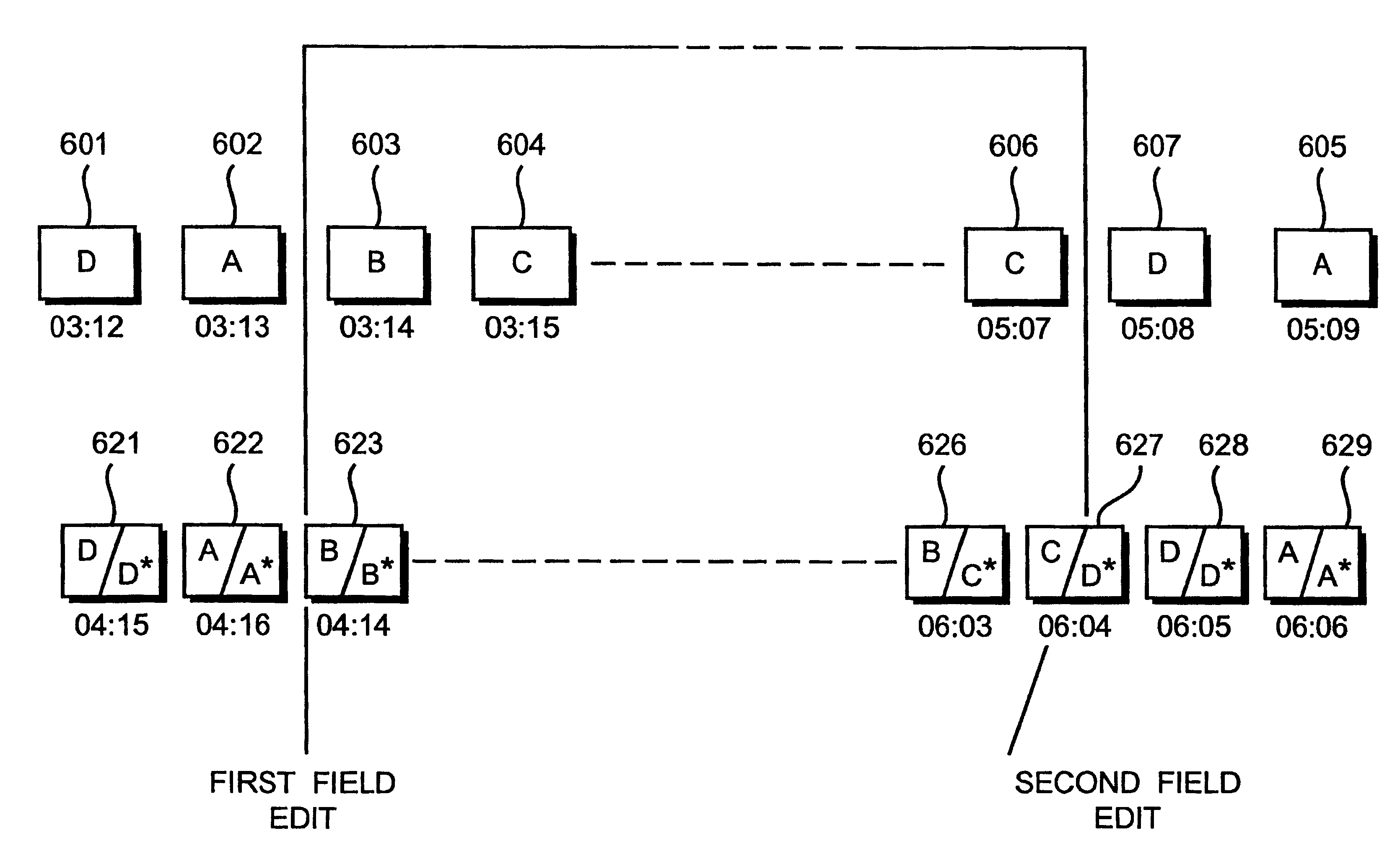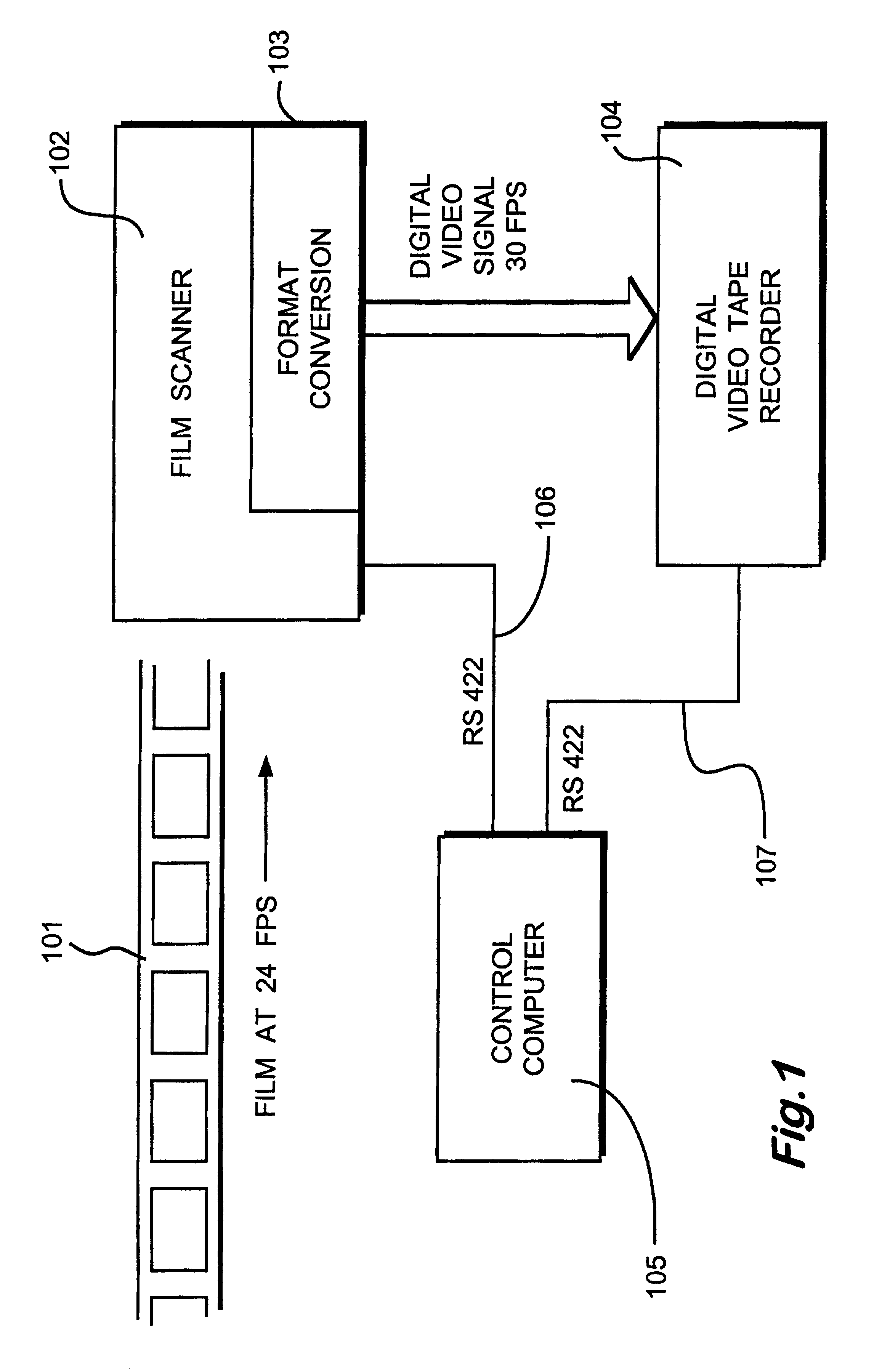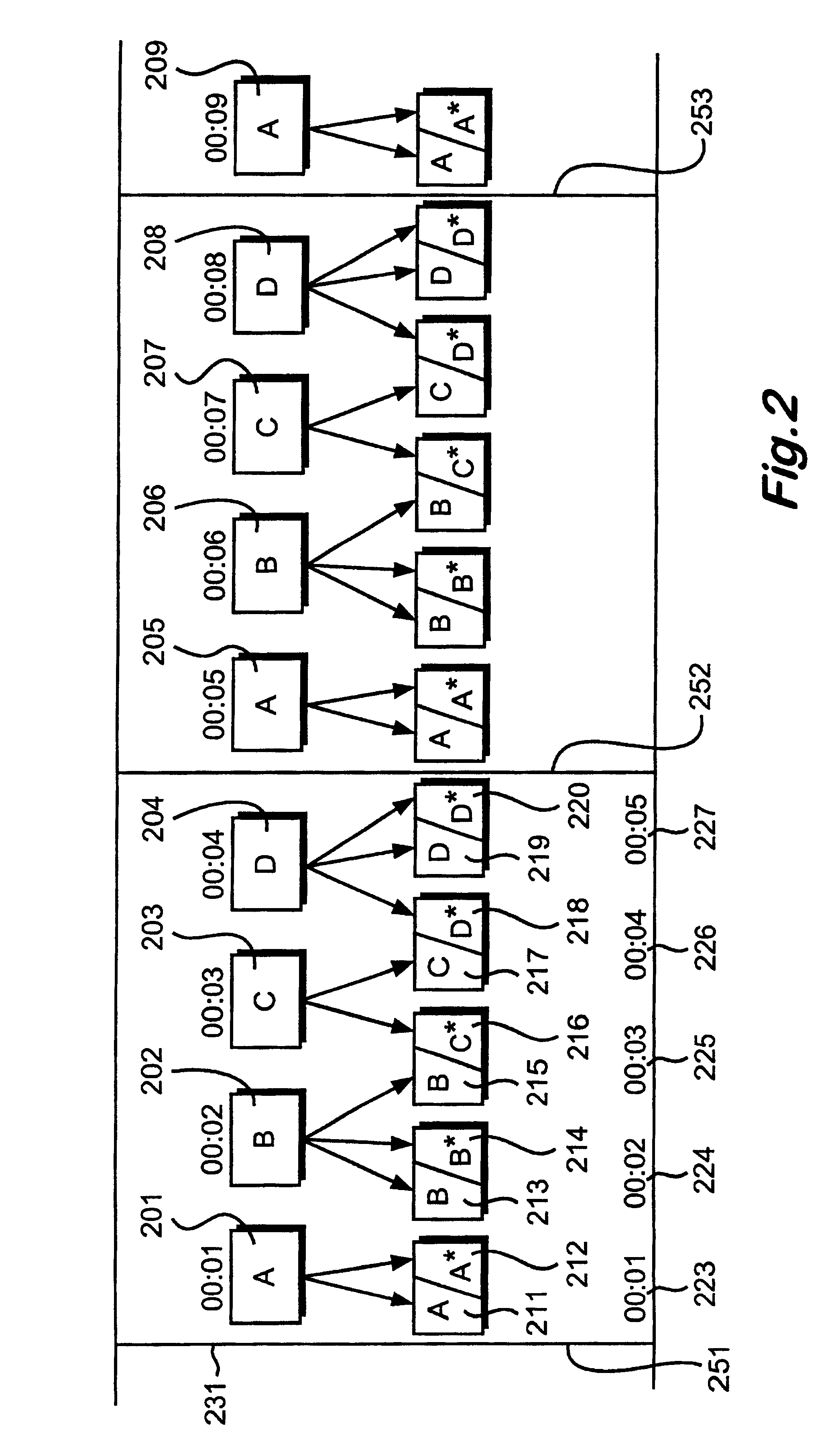Editing video data
a video data and video technology, applied in the field of original video data editing, can solve the problems of introducing artefacts, difficult to convert film images into video data, and jittering of images,
- Summary
- Abstract
- Description
- Claims
- Application Information
AI Technical Summary
Problems solved by technology
Method used
Image
Examples
Embodiment Construction
[0019]A system for recording cinematographic film onto digital video tape is illustrated in FIG. 1. Cinematographic film stock 101, configured to be displayed at a rate of twenty-four frames per second is received by a film scanner 102, configured to generate high definition video signals at an off-line speed less than the real-time display rate.
[0020]Film scanner 102 includes a format conversion process 103 arranged to convert image signals scanned at 23.98 frames per second (notionally twenty-four frames per second) into a digital video signal with frames at 29.97 frames per second (notionally thirty frames per second). The thirty frame per second digital video signal is supplied to a digital video tape recorder 104 and both the film scanner 102 and the digital video tape recorder 104 are controlled by a control computer 105 over RS422 serial interfaces 106 and 107.
[0021]Format conversion process 103 is illustrated in FIG. 2. Film scanner 102 produces a progression of frames deriv...
PUM
| Property | Measurement | Unit |
|---|---|---|
| time-code | aaaaa | aaaaa |
| frequency | aaaaa | aaaaa |
| speed | aaaaa | aaaaa |
Abstract
Description
Claims
Application Information
 Login to View More
Login to View More - R&D
- Intellectual Property
- Life Sciences
- Materials
- Tech Scout
- Unparalleled Data Quality
- Higher Quality Content
- 60% Fewer Hallucinations
Browse by: Latest US Patents, China's latest patents, Technical Efficacy Thesaurus, Application Domain, Technology Topic, Popular Technical Reports.
© 2025 PatSnap. All rights reserved.Legal|Privacy policy|Modern Slavery Act Transparency Statement|Sitemap|About US| Contact US: help@patsnap.com



